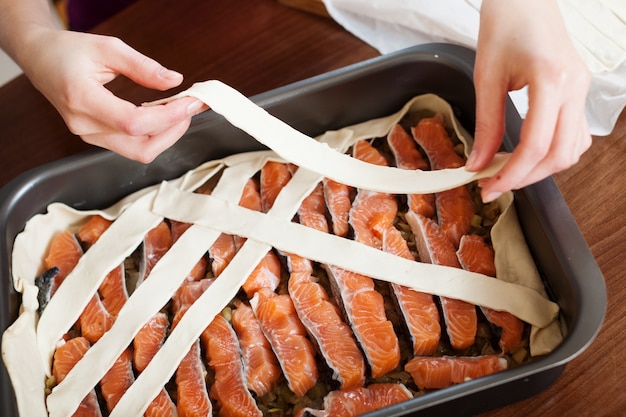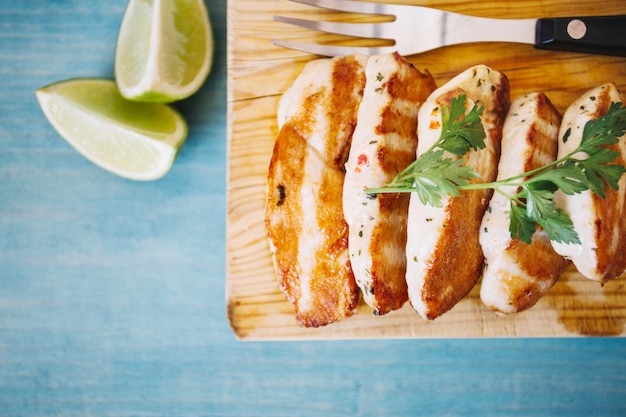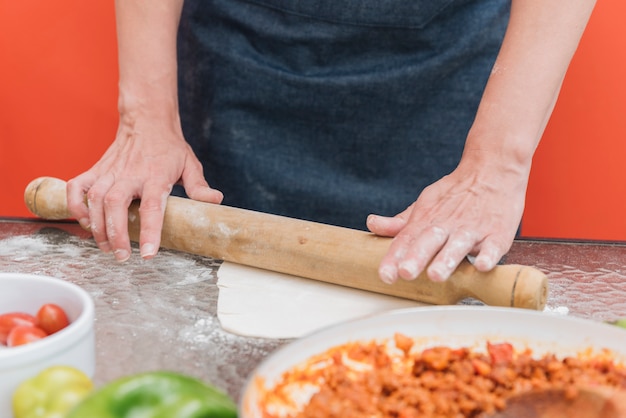Let's be honest, there are few things more satisfying than a good chicharron. The satisfying crunch, the salty, savory flavour, the way they just melt in your mouth... it's a culinary experience that's hard to beat. But making good chicharrones isn't always easy. It's a bit of an art, a balancing act between heat, time, and the right kind of pork skin. And let me tell you, a bad batch of chicharrones can be a real let down.
I've been on a chicharron quest for years, trying them in all sorts of places, from street stalls in Mexico to fancy restaurants in London. I've learned a thing or two about what makes a good chicharron, and I'm here to share my knowledge with you.
So, grab your apron, fire up the stove, and let's embark on a journey to chicharron mastery. We're going to cover everything from choosing the right pork skin to frying techniques and even some creative variations. By the end of this, you'll be a chicharron pro, ready to wow your friends and family with the most delicious, crispy cracklings you've ever tasted.
(Part 1) The Basics of Chicharrones

What are Chicharrones?
Chicharrones are essentially deep-fried pork skin. They're a beloved snack and appetizer in Latin America, the Caribbean, and many parts of the US. You'll find them everywhere from street food stalls to fancy restaurants. It's that kind of snack that's universally loved for its simple yet satisfying flavor.
Why Chicharrones are So Delicious
Okay, let's get real for a moment. The magic of chicharrones lies in the fat. That's right, the fat is the real star of the show! As the pork skin is fried, the fat renders out, leaving those crispy, airy pockets of pure deliciousness. It's like a little explosion of flavour in your mouth.
But it's not just the texture. The fat also adds a richness and depth of flavour that you just can't get from other snacks. It's that perfect balance of salty, crispy, and a hint of sweetness that makes chicharrones so darn addictive.
Choosing the Right Pork Skin
The key to amazing chicharrones starts with the right pork skin. You want thick, firm pieces with a good amount of fat. Think of it as a happy medium between lean and fatty. It's that fat that's going to render out and give you that crispy texture.
Avoid thin, dry, or perforated skin. It won't hold up well during frying and you'll end up with a soggy mess. If you can, go to a butcher or specialty meat market. They usually have higher quality cuts than what you find at the supermarket.
Preparing the Pork Skin
Before you start frying, you need to prep the pork skin. It's a bit of a meticulous process, but it's worth it. First, remove any excess fat. You want the skin itself to be the star, not a bunch of fat. Then, trim away any tough bits or uneven edges. Give the skin a good rinse and pat it dry with paper towels. Now, it's time to season!
A generous sprinkle of salt is essential. This will draw out the moisture from the skin and help it become crispy. But feel free to get creative and add your own personal touch. I like to add a bit of ground cumin, paprika, or even a pinch of garlic powder. Don't be afraid to experiment!
(Part 2) Deep-Frying 101

Why Deep-Frying?
Deep-frying is the golden standard for chicharrones. It allows for even cooking, resulting in that glorious, all-over crispness that we're after. A shallow pan just won't do the job. You need a good deep fryer or a large pot that can hold enough oil for a proper deep fry.
The Oil
Now, let's talk about the oil. I prefer a neutral oil with a high smoke point, like vegetable oil or canola oil. This won't add any unwanted flavours to your chicharrones. But if you're feeling adventurous, try lard! It'll give your chicharrones an incredible porky flavour, but be careful not to overheat it.
The Temperature
The temperature of the oil is absolutely crucial. You want it to be hot, but not too hot. Aim for around 350°F (175°C). Too low and your chicharrones will be soggy. Too high, and you'll end up with burnt cracklings. Use a thermometer to check the temperature before you start frying.
And don't crowd the fryer! Overcrowding will lower the temperature of the oil and lead to uneven cooking. Fry the chicharrones in batches to ensure each piece gets a good dose of that hot oil.
Frying Time
The frying time depends on the size of your pork skin pieces. Smaller pieces will be ready in a few minutes, while larger ones might need 10-15 minutes. The key is to watch them closely. You want them to be golden brown and crispy. Use a slotted spoon to test the chicharrones. If they're firm and break easily when you press them, they're ready to go!
(Part 3) Techniques and Variations

The Classic Method
The classic method is simple, straightforward, and always delivers great results. Just fry the seasoned pork skin until it's crispy, then drain on paper towels. It's a foolproof technique that's perfect for beginners.
The Slow and Low Approach
For an extra-crispy chicharron, try the slow and low method. It's all about patience and a lower temperature. Fry the skin at around 300°F (150°C) for a longer period. This allows the fat to render out more slowly, giving you a super crunchy, almost airy texture. It takes a bit longer, but the results are worth it.
The pressure cooker Trick
Want a shortcut? The pressure cooker can be a great way to get a head start on your chicharrones. Add the pork skin and a bit of water to your pressure cooker and cook for about 15-20 minutes. This will help to soften the skin and make it easier to fry. Once it's cooked, remove the skin from the pressure cooker and fry it in hot oil until crispy. This method can save you time and effort, but remember to use caution with your pressure cooker.
Chicharron Variations
Chicharrones don't have to be just plain pork skin. Here are a few ways to add some flavour and excitement to your snacking experience:
- Spicy Chicharrones: Add a pinch of cayenne pepper or chili powder to the seasoned pork skin for a fiery kick.
- Garlic and Herb Chicharrones: Combine garlic powder, rosemary, and thyme for a more savory and aromatic flavour profile.
- Sweet and Savory Chicharrones: After frying, toss the chicharrones in a mixture of sugar and cinnamon for a unique sweet and savory combo.
(Part 4) Storage and Enjoyment
Storing Your Chicharrones
Chicharrones are best enjoyed fresh, right out of the fryer. But if you have leftovers, you can store them in an airtight container at room temperature for a few days. They'll lose a bit of their crispness, but will still be delicious.
For longer storage, freeze your chicharrones for up to a month. Place them in a freezer bag and freeze them flat. Reheat them in a low oven or air fryer until crispy before enjoying.
Serving Suggestions
Chicharrones are incredibly versatile, and there are endless ways to enjoy them. Here are a few ideas:
- As a Snack: Chicharrones are a perfect standalone snack, especially for those late-night cravings.
- In Tacos and Burritos: Add a sprinkle of chicharrones to your favourite tacos and burritos for an extra layer of crunch and flavor.
- With Dips: Pair chicharrones with your favourite dips, like guacamole, salsa, or queso. The combination of textures and flavors is simply divine.
- In Salads: Add a handful of chicharrones to your salad for a unique textural element and savory flavor. It's a great way to add some crunch and personality to your salads.
- With Drinks: Chicharrones are a fantastic accompaniment to beer, cocktails, or even a glass of wine. It's the perfect combination of savory and refreshing.
(Part 5) Troubleshooting Common Issues
Even the most seasoned chicharron maker can run into a few hiccups. Here's how to troubleshoot some common problems:
Soggy Chicharrones:
This is usually caused by the oil not being hot enough or overcrowding the fryer. Make sure your oil is at the right temperature and fry the chicharrones in batches. That way, the oil stays hot and you get even cooking.
Burnt Chicharrones:
If your chicharrones are burning, your oil might be too hot. Lower the temperature slightly and keep a close eye on them. It's better to be safe than sorry when it comes to burning your chicharrones.
Unevenly Cooked Chicharrones:
This can happen if the pork skin pieces aren't all the same size. Try to cut them into even pieces to ensure consistent cooking. A little bit of prep goes a long way!
(Part 6) Chicharrones: Beyond the Basics
Chicharron Powder
For the ultimate chicharron experience, try chicharron powder. It's made from finely ground chicharrones and can be used to add a delicious, savory punch to all sorts of dishes. Think of it as a secret ingredient for extra flavour.
Sprinkle it over soups, stews, popcorn, or pasta. It's also great for adding a smoky, crispy flavour to dips and sauces.
Chicharron Recipes
Chicharrones are a versatile ingredient that can be incorporated into countless dishes. Here are a few ideas to get you started:
- Chicharron Quesadillas: Stuff tortillas with cheese and chicharrones for a cheesy, crispy treat.
- Chicharron Tacos: Top your tacos with crunchy chicharrones for extra texture and flavor. They'll add a delicious crunch to any taco.
- Chicharron Salad: Add chicharrones to your favourite salad for a crunchy, savory twist. They'll elevate your salad game to the next level.
(Part 7) Chicharrones: A Global Delight
Chicharrones Around the World
Chicharrones are enjoyed all over the world, with each region having its own unique take on this beloved snack. In Mexico, they're often served with salsa and guacamole, a perfect pairing of spicy and savory. In the Philippines, they're called "chicharon" and are usually made with pork belly or skin, giving them a richer flavour. In Spain, they're known as "chicharrón" and are often served with tapas, showcasing the diversity of Spanish cuisine.
A Cultural Legacy
Chicharrones have a rich cultural history, dating back centuries. They've been enjoyed by people from all walks of life, and continue to be a popular snack today. Their versatility, affordability, and undeniable deliciousness have made them a culinary icon, a testament to the enduring power of simple, satisfying food.
(Part 8) FAQs
1. Can I make chicharrones in an air fryer?
Absolutely! Air fryers are a great way to make crispy chicharrones without the mess of deep frying. Preheat your air fryer to 400°F (200°C), add the seasoned pork skin, and cook for 8-10 minutes, or until golden brown and crispy. You may need to flip them halfway through cooking to ensure even browning. Air frying is a healthier option and is just as convenient.
2. How can I tell if my chicharrones are done?
The best way to tell if your chicharrones are done is to test their crispness. When you take a piece out of the oil, it should be golden brown and shatteringly crispy. If it's still soft or pliable, fry it for a bit longer. You want that perfect crunch.
3. What can I do with leftover chicharron fat?
Leftover chicharron fat can be used to add flavor and richness to other dishes. You can use it to fry other foods, like potatoes or vegetables, or even add it to your next batch of chili or stew. It's a great way to add a depth of flavour to your cooking.
4. Can I make chicharrones with other meats?
While pork skin is the most common ingredient for chicharrones, you can experiment with other meats, such as chicken skin or beef fat. The process is essentially the same, but you may need to adjust the cooking time. Get creative and explore different flavour profiles!
5. Can I make vegan chicharrones?
While true chicharrones are made with pork skin, you can create a vegan version using jackfruit or seitan. These ingredients can be seasoned, fried, and will offer a similar texture and crunch to traditional chicharrones. It's a great option for those following a plant-based diet.
(Part 9) Chicharrones: A culinary adventure
Making chicharrones is a culinary adventure. It's not just about the end result, it's about the process, the anticipation, the smell of frying pork skin, and the satisfaction of creating a crispy snack that's guaranteed to please. Don't be afraid to experiment, try different techniques, and find what works best for you.
Remember, chicharrones are a celebration of simple pleasures, a reminder that sometimes the most delicious things are the ones that are made with just a few ingredients and a whole lot of heart. It's a snack that brings people together, a symbol of shared enjoyment.
(Part 10) A Final Word
I hope this guide has inspired you to embark on your own chicharron adventure. Whether you're a seasoned chicharron enthusiast or a curious newcomer, there's always something new to discover in the world of crispy pork cracklings.
So go forth, my friends, and create some chicharrones that will make your taste buds sing! You won't regret it. And remember, have fun with it! The best chicharrones are made with passion and a little bit of creativity. Happy frying!
Everyone is watching

Corn on the Cob: The Ultimate Guide to Perfectly Cooked Ears
Healthy MealsAh, corn on the cob. Just the name evokes images of sunny days, barbecues, and that sweet, juicy flavour that ...

Scallops: The Ultimate Guide to Perfect Cooking
Healthy MealsAh, scallops. Those delicate, sweet, and utterly delicious morsels of the sea. They hold a special place in my...

Spaghetti Squash: The Ultimate Guide to Cooking and Serving
Healthy MealsRemember that time you saw spaghetti squash at the supermarket, looking all bumpy and strange, and thought, "W...

Salmon Cooking Times: Perfect Guide for Every Recipe
Healthy MealsLet me tell you, cooking salmon is an art form. It's all about getting that perfect balance: juicy and tender,...

Ham Cooking Time: How Long to Bake, Smoke, or Boil a Delicious Ham
Healthy MealsAh, ham. It's a classic, isn't it? A real crowd-pleaser, especially around holidays. And when done right, it'...
